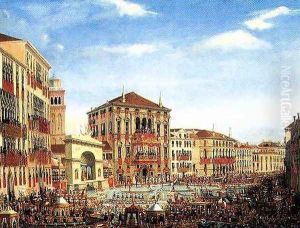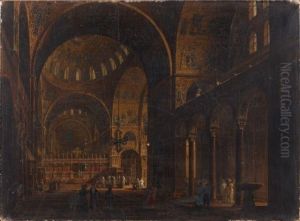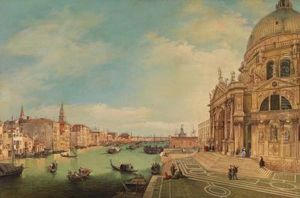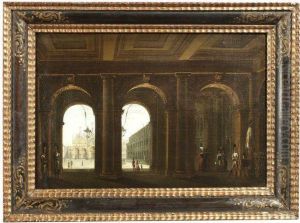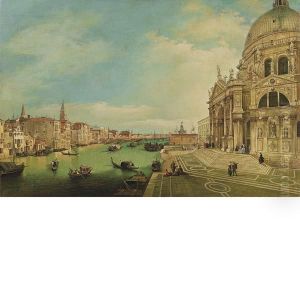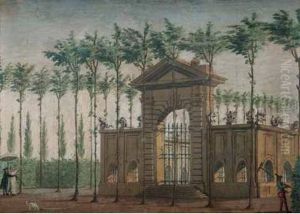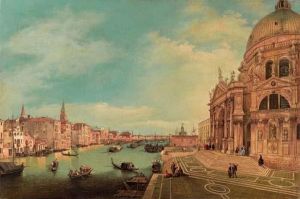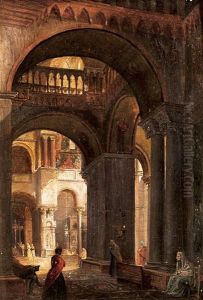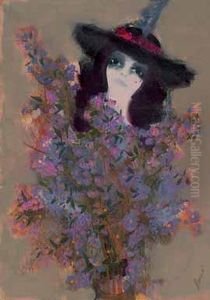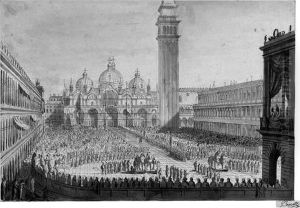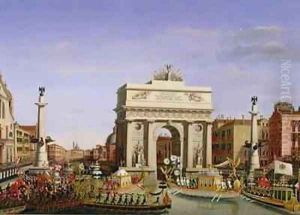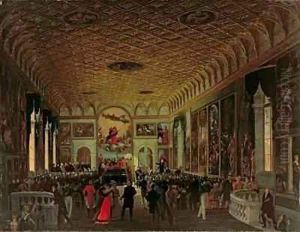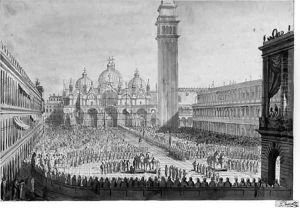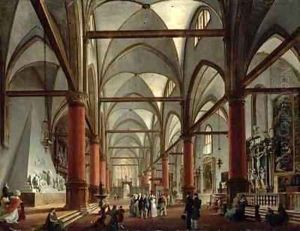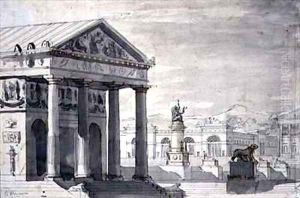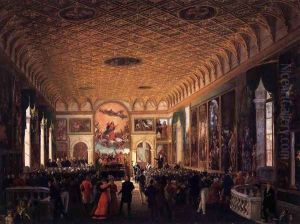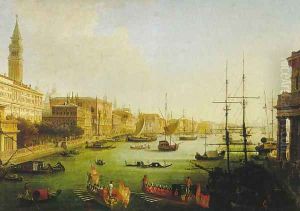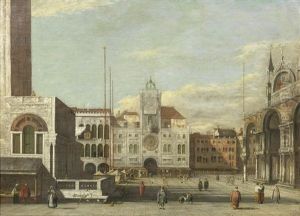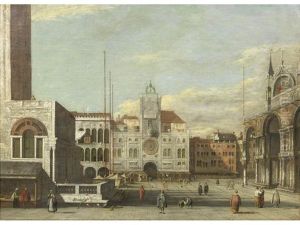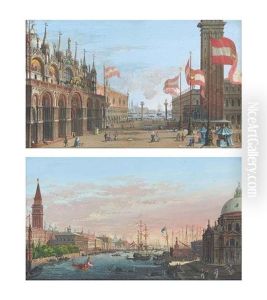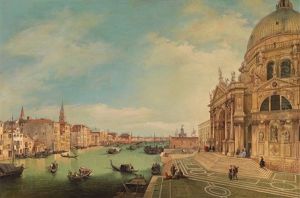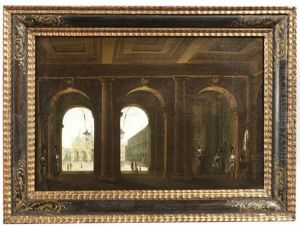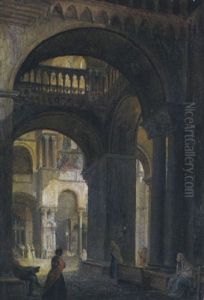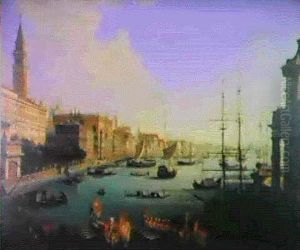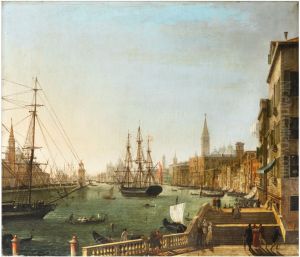Giuseppe Borsato Paintings
Giuseppe Borsato was an Italian painter, scenographer, and architect, born in Venice in 1770 and passed away in 1849. He is most renowned for his contributions to the Venetian neoclassical movement, which was part of a broader European trend that sought to revive the art and architecture of ancient Greece and Rome. Borsato's work was characterized by its meticulous attention to detail, balanced compositions, and a keen interest in the interplay of light and shadow, which was particularly evident in his architectural renderings and theatrical stage designs.
Borsato's education in art began under the tutelage of prominent Venetian painters of the time. His talent was recognized early on, and he quickly made a name for himself as a skilled painter. However, it was his work as a scenographer that brought him significant acclaim. Borsato designed elaborate sets for the La Fenice opera house, one of Venice's most prestigious cultural institutions, and his innovative designs were celebrated for their imaginative interpretation of space and atmosphere.
Besides his theatrical work, Borsato was also involved in architectural projects, contributing to the design and restoration of several important buildings in Venice. His architectural style, like his paintings, reflected the neoclassical ideals of symmetry, harmony, and proportion, infused with a sense of elegance and simplicity.
Throughout his career, Borsato was a respected figure in the Venetian art scene, influencing a generation of artists and designers. His legacy is preserved in his numerous paintings, stage designs, and architectural drawings, which continue to be studied and admired for their artistic and historical significance.
Despite the recognition he received during his lifetime, Giuseppe Borsato's name is not as widely known today outside of Italy. Nonetheless, his contributions to the arts, particularly in the context of the Venetian neoclassical movement, remain an important part of European cultural heritage. His work encapsulates the spirit of an era that was deeply fascinated with the classical past, yet eager to interpret it through the lens of contemporary sensibilities.
